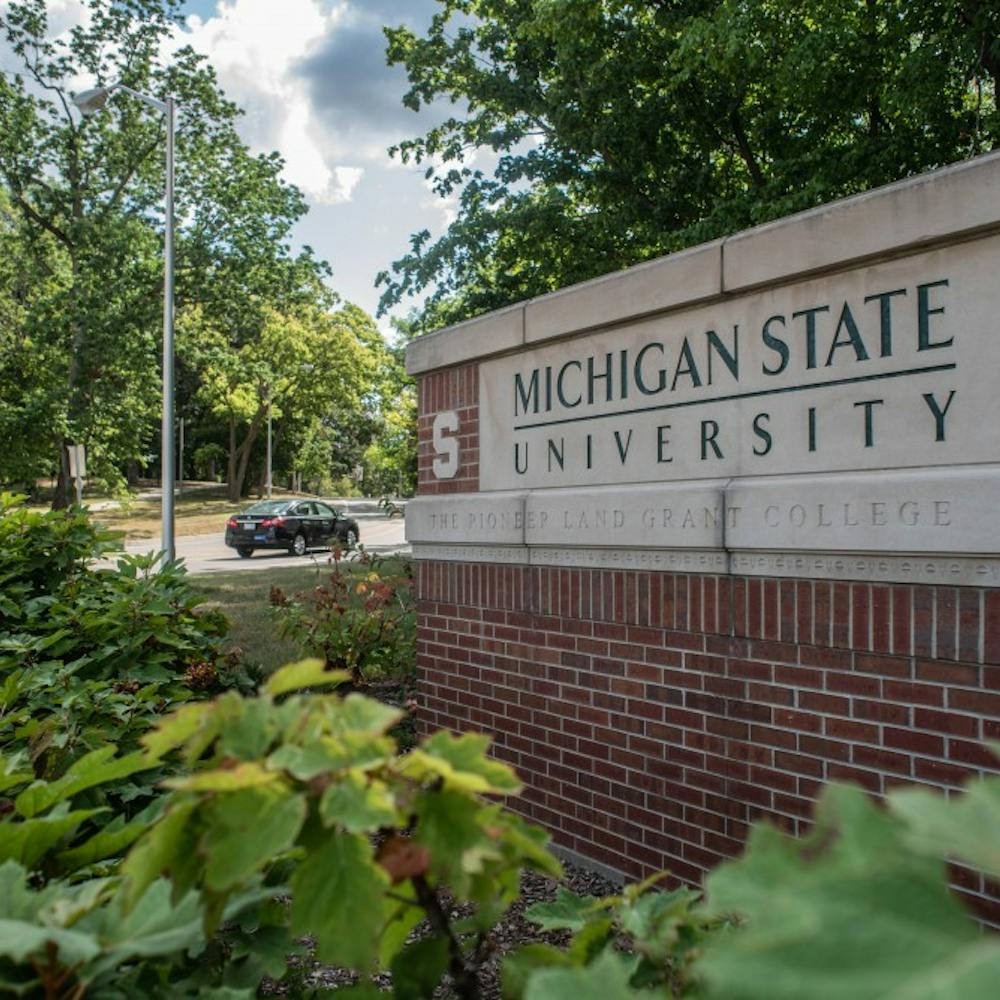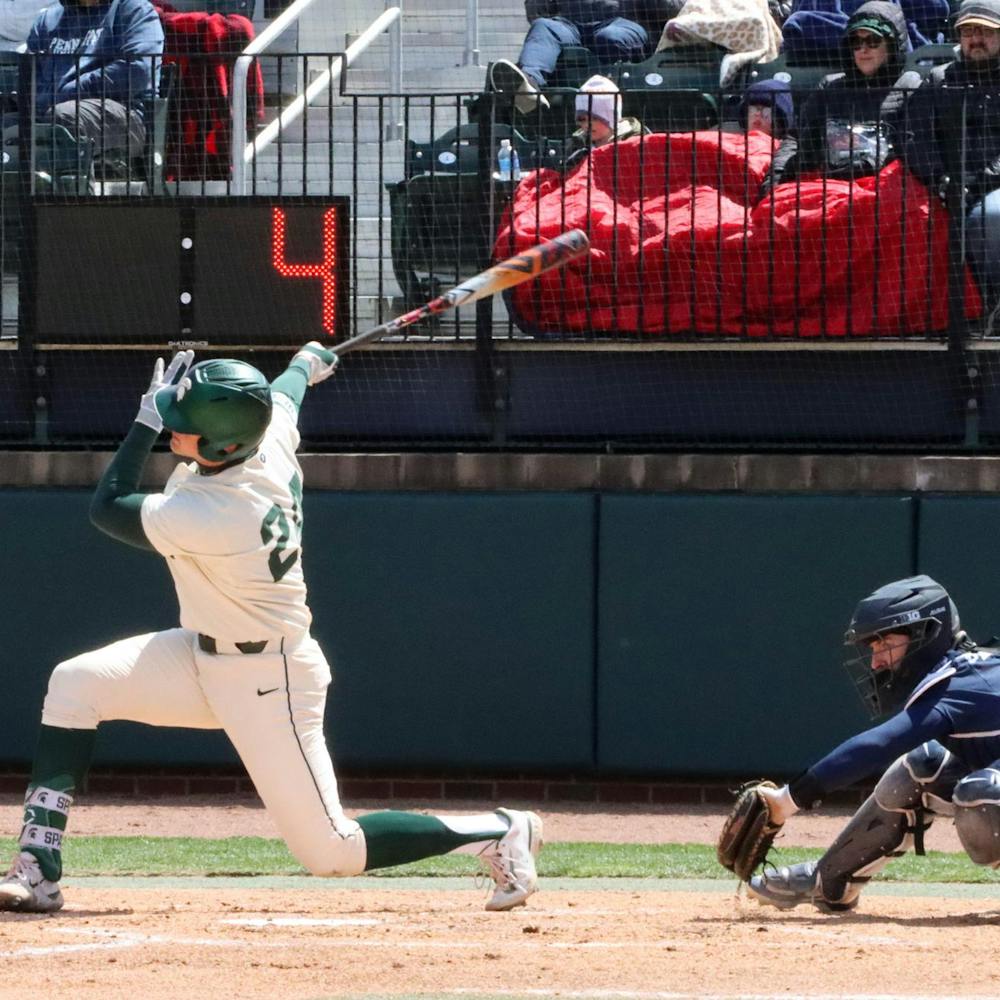Campus is peppered with leaves, sweaters, fleeces and jackets. Students and professors complain about the cold but admire the brightly colored maples, oaks and flowers that make up MSU’s fall environment.
Meanwhile, Wesley Richards is sweating in a light blue T-shirt and jeans while watering a monochromatic habitat of dark green plants and trees.
But the horticulture freshman is in the middle of campus.
Richards is working Thursday in the Rainforest room of the Botany Greenhouse behind Marshall Hall.
“The first thing we do when we come in the morning is open the vents,” he says. “I have come in here before and it’s been almost 120 degrees.”
Workers usually open the doors next. Although the greenhouse is closed to the public, its doors usually stay open to cool things down.
“It just gets so hot in here,” Richards says, noting that the temperature now is 80 degrees with the entrances open.
The greenhouse is only accessible by appointment or for teaching research, so it is usually pretty empty. This week, however, science labs are visiting the conservatory.
“We’ve been moving about 600 people through this week,” Richards says after answering a student’s question about one of the trees.
“You’ve got to actually watch where you put the hose,” he says as he waters some plants. “Usually, just as long as everything gets a little wet, it’s fine.”
But it can be tricky to get every tree and plant a little wet.
“There’s all these little routes you’ve got to walk through,” Richards says as he ducks under a tree and walks along a narrow dirt path hidden by some trees and plants.
He cuts extra leaves from a banana plant, then pulls some weeds from nearby plants.
“This is more like gardening, which is good,” Richards says.
Pre-vet sophomore Travis White, who works with Richards, says the greenhouse provides “a great atmosphere.”
“It’s like you’re in a jungle, like you’re in a real jungle,” he says. “It’s a good environment being around green plants - it’s a good change from all the schoolwork and all the reading you have to do.”
There are normally two workers and an overseer in the greenhouse between 8 a.m. and 5 p.m., Richards says. However, they usually work individually.
“Unless you’re pruning trees to where you need someone to hold the ladder, you’re usually separated,” he says.
He moves the hose off the path and waits for the lab students to move so he can throw out dead leaves and weeds in the garbage can in the back room.
“I hope these labs quit coming through soon,” he says, adding that workers have to move plants around and make sure the paths are clean and free of objects.
He answers a few more questions about the names of plants and where certain ones are located, then enters the greenhouse’s Arid House, which is filled with desert plants.
“This job is different every day - it’s not repetitive. I can’t stand repetitive jobs,” Richards says.
“You always come home dirty, always covered in something,” he says as he walks through to see what plants need pruning. Because they are used to a desert climate, many of the plants only need to be watered once a week.
“Most of the plants in here aren’t your everyday type of plants,” he says. “All the plants don’t require the same amount of water.”
Soil conditions and colors of plants show when they need to be watered, Richards says.
“As my boss says, watering is more of an art than a science.”
He pulls extra white seeds off a small green plant called a senecio. As with watering, some plants require more maintenance than others.
“This guy - you clean him up and an hour later, he sheds his leaves,” Richards says, pointing to a subtropical tree.
Working with the plants is better than reading about them in a book, Richards says.
“I’ve learned stuff here that I couldn’t learn in a classroom,” he says.
He starts to clean another desert plant.
“Wasps live in these, so whenever you shake it, they come out,” he says. Although Richards has not been stung, co-workers have been. He has had to destroy wasp nests in the greenhouse.
The environment attracts a lot of bugs, so the workers must do biological controls - bringing in certain insects to kill extra bugs.
“Ahh - a cockroach.” Richards whisks one off his arm. “They’re all over the place.”
“We get little creatures running around all the time,” he says.
But not all of these creatures are unwanted. Richards points to a tree frog that has been sitting on a plant in the rainforest area for a couple months.
“He doesn’t move or anything and he lets us touch him,” he says, petting the animal. “He’s like a little pet.”
Richards turns down the radio, which is playing rock music.
“Usually it’s on classical music - supposedly, it helps the plants grow better.”
He adds some water to a saltwater tank in a back room, then goes out to the rainforest to do some last-minute pruning before going to class.
He leans over the pond.
“We’ve got to make sure the water levels are right,” he says. “Every once in a while, I throw a hose in.”
He also makes sure the water is clean.
“We get a lot of debris in the pond - I have to make sure nothing’s clogged up.”
Richards usually sweeps the paths every day. However, he has to leave for class, so someone will sweep the next morning.
Environmental biology junior Jessica Long, who works with Richards, said the work is relaxing.
“I can work by myself and just sort of zone out with the plants - I don’t have to think about anything but the plants,” she said.
The job is a stress-reliever, Richards says.
“All I do is stress about classes, and I come in here and it’s relaxing,” he says. “You kind of lose yourself in here.”



